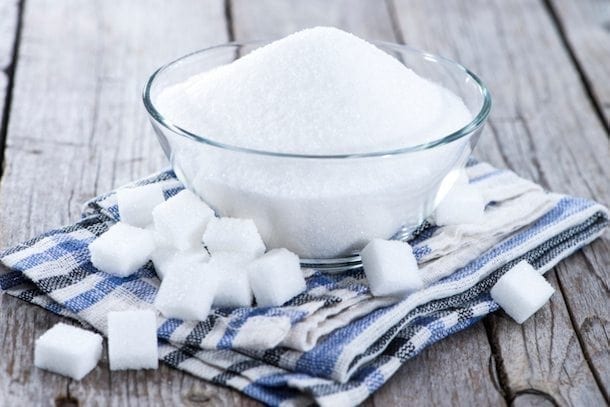The Institute of Medicine recommends that added sugars make up less than 25% of your total calories. To put that in perspective, just one 12-ounce can of sugar-sweetened soda per day would put almost everyone over that number, if not close to it.
Soda’s an obvious source, but the truth is added sugars can be found in almost everything these days, and they can be real saboteurs of healthy eating. Added sugar is little more than a source of empty calories that can lead to extra pounds and even obesity, which increases the risk for chronic diseases like diabetes, heart disease, and cancer.
Over the years I’ve been able to seriously cut down on the amount of added sugar in my diet simply by paying attention and making smarter choices. Here are some tips for those of you who want to do the same.
1. Begin with beverages You’re not exactly “eating” a soda, but the calories and added sugar still counts. Today, Americans consume 200 to 300 more calories per day than they did 30 years ago, and nearly half of those calories come from sugary drinks. (Sadly, the trend is spreading globally.) Soda is the most recognized culprit as far as sugar-sweetened beverages are concerned, but other soft drinks like fruit punch, lemonades, and energy drinks typically have as much added sugar as full-calorie soda. Cutting down from two per day to one can add up to 16 pounds of weight loss in a year. Here are 8 tips to help you kick your can (or bottle) habit.
2. Know your nicknames Food manufacturers have come up with some pretty creative names for added sugar over the past few years, making it nearly impossible to pick them out if you don’t know what you’re looking for. Here are 44 most common nicknames for sugar to become familiar with.
3. Navigate ingredient lists Now that you can spot added sugars in a list of ingredients, it’s time to start reading them! Going completely added-sugar free is not necessarily practical, or possible for that matter, but this simple trick can help you find healthier options in the supermarket.
Hello Healthy Tip: When comparing foods with added sugars such as cereals, breads and salad dressings, go for the ones that contain less than 3g of sugar per serving, or ones that list sugar as the 5th ingredient or later. Since ingredients are listed by weight, the later sugar appears on the list the less you’ll be eating.
4. Spot the sneaky sources Foods don’t necessarily have to taste sweet to contain added sugar. In fact, sugar is present in most packaged foods, even the savory ones you’d never suspect. Some common sneaky sources of added sugar: salad dressing, Asian sauces, frozen dinners, cereals, and fruit spreads. Here are 10 more surprisingly “sweet” items.
5. Swap in fruit Instead of pouring a sugar-sweetened vinaigrette dressing all over your salad, add a natural pop of sweetness with fresh or unsweetened dried fruit. Same goes for yogurt: skip the fruit-at-the-bottom goop, and add fresh strawberries or banana to plain yogurt instead. Fruit is a wonderful, natural source of sugar that also provides your body with fiber, vitamins, and minerals.
6. Make dessert special I’m not saying never have them, but save the cookies, ice cream, cheesecake, and soda for special occasions, like a nice dinner out with friends or a weekend barbeque. If your meal needs a sweet finish, prep a big bowl of fruit salad on Sunday to help you curb any after-dinner cookie cravings during the week.
7. Realize it’s not all or nothing Just because you want to “stop eating added sugar” doesn’t mean you need to cut out every last gram. Yes, you can still enjoy ketchup on your cheeseburger and your afternoon square of dark chocolate. To put a serious dent in decreasing your intake, start with the biggest sources, like soda, and foods you eat frequently, such as sandwich bread. Picking up no-sugar-added packaged foods, like pasta sauce and dressings, is another great place to start. Your tastebuds most likely won’t notice the difference—but over time your body will.
Have you recently given up added sugar? Share your tips in the comments below!




